Search
Search Results
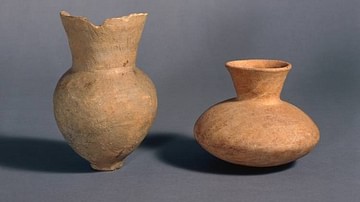
Image
Yayoi Pottery
Unglazed, hand-made red pottery vases from the Late Yayoi Period, 1st-2nd century CE Japan.
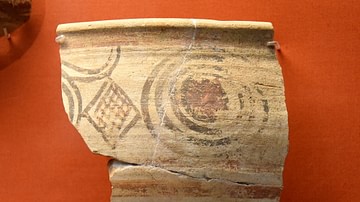
Image
Philistine Pottery Sherd
Following their settlement in the Levantine coast at the beginning of 12 century BCE, the Philistines began to produce a local variant of the Mycenaean pottery known as "Mycenaean IIIC1B". Initially, this was quite simple in its designs and...
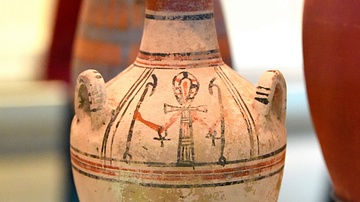
Image
Pottery Jar with Ankh Sign
A pottery jar with three painted representations of the ankh sign with 2 arms holding 2 was scepters. From the New Kingdom of Egypt, Ramesside Period, 1292-1069 BCE.
The British Museum, London.
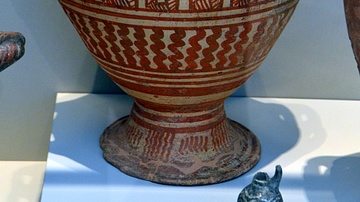
Image
Etruscan Red on White Pottery Vessel
An Etruscan red on white slip pottery vessel from Vulci or Bisencio, c. 700 BCE. (Antikensammlung Berlin)

Image
Pottery Jar From Badari
This is a pottery jar with black repousse. It has 2 perforated handles on its shoulder. From Badari, Egypt. Pre-Dynastic Period, Naqada III, 3200-3150 BCE. The Petrie Museum of Egyptian Archaeology, London (with thanks to The Petrie Museum...
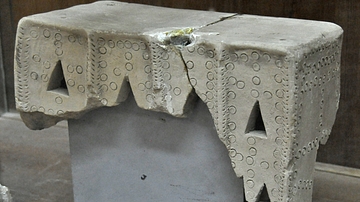
Image
Pottery Thurible from Tell Basmosian
This is a fragment of a pottery thurible (censer for burning incense) which was found at Tell Basmosian (modern Lake Dukan, Sulaimaniya Governorate, Iraq). 2nd millennium BCE. (The Sulaimaniya Museum, Iraq).
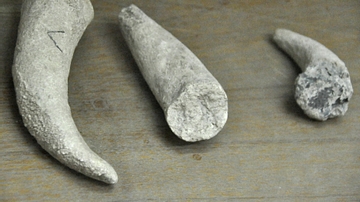
Image
Pottery Cones
These bended pottery cones were probably used for votive purposes. Ubaid period, 4th millennium BCE, Mesopotamia, Iraq. (The Sulaimaniya Museum, Iraq).
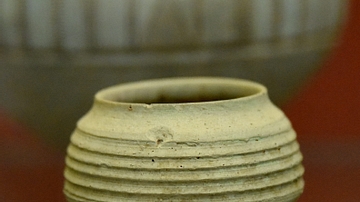
Image
Pottery Cup from Ninevite V Incised Period
This pottery cup was wheel-made and unpainted. It has a pointed base. Excavated by Robin Hamilton and Reginald Thompson in 1930-1931 season. Ninevite 5 period, 2750-2500 BCE. From Nineveh, northern Mesopotamia, modern-day Iraq. (The British...
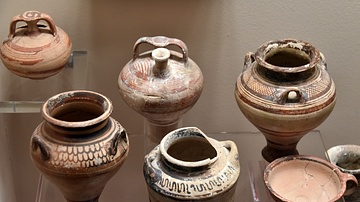
Image
Mycenaean Pottery Vessels from Jordan
The term "Mycenaean" is derived from the site of Mycenae; it refers to the culture of Greece during the Middle and Late Bronze Ages. Mycenaean imports greatly increased around 1400 BCE and were mostly stirrup vessels, pyxides, and piriform...

Definition
Jomon Period
The Jomon Period is the earliest historical era of Japanese history which began around 14500 BCE, coinciding with the Neolithic Period in Europe and Asia, and ended around 300 BCE when the Yayoi Period began. The name Jomon, meaning 'cord...